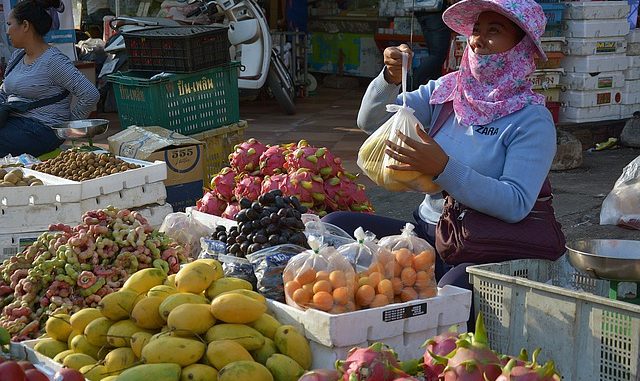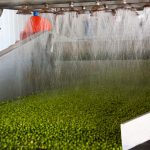
A number of fruits from the Garcinia genus are in commercial cultivation and now widely available. However you might not be so familiar with the rata fruit (Garcinia dulcis Kurz.). Its relatives are Garcinia cambogia, the mangosteen and the rambutan.
The rata fruit is an exotic tropical fruit native to Southeast Asia, particularly found in countries like Malaysia, Borneo, Indonesia, and the Philippines. It belongs to the Clusiaceae group (Guttiferae family) and is also commonly referred to as the “sweet garcinia” or “mundu” fruit.
Description Of Tree
The tree produces a thin-skinned, yellow fruit about 1 in in diameter, with a short sharp point at the flower end. The flesh is soft with a buttery softness. the flavour is acidic and fruity. It is used as a dessert fruit and is usually eaten fresh. It is used in jam and to flavour desserts.
Compounds In Garcinia dulcis
The main aroma volatiles are linalool, α‐terpineol and hexadecanoic acid (Pimo et al., 2003) based on gas chromatograpgy-mass spectroscopy (GC-MS).
The rata fruit has a unique appearance and taste. Here are some key characteristics:
- Size and Shape: The rata fruit is relatively small, typically around the size of a large cherry or ping-pong ball. It has a rounded shape, similar to a miniature pumpkin or tomato.
- Colour: When ripe, the fruit’s skin turns yellow or orange-yellow, though some varieties may have a reddish tinge. The skin is thin and slightly glossy.
- Texture: The rata fruit has a thin, smooth skin that is easily peelable. Beneath the skin, the fruit’s flesh is soft and juicy, often described as succulent.
- Flavour: One of the most notable features of the rata fruit is its sweet and tangy taste. The flavor is often described as a combination of tropical flavors, including hints of citrus, mango, and pineapple. The fruit’s sweetness is balanced by a mild acidity.
- Seeds: The rata fruit typically contains one or more seeds in its center. The seeds are large, dark brown, and somewhat flattened.
The rata fruit is enjoyed for its refreshing and flavorful taste. It can be eaten fresh as a snack, or incorporated into various culinary preparations. Some common uses of rata fruit include:
- Culinary Applications: The sweet and tangy flavor of the rata fruit makes it suitable for desserts, jams, jellies, and fruit salads. It can be used as a topping for ice cream or blended into smoothies and juices.
- Traditional Medicine: In certain traditional practices, different parts of the rata plant, including the fruit, leaves, and bark, have been used for their potential medicinal properties. They are believed to possess anti-inflammatory, antimicrobial, and antioxidant effects, although further scientific research is needed to validate these claims.
- Decorative Purposes: The vibrant color and unique shape of the rata fruit make it visually appealing, often used as a decorative element in fruit displays or as an ingredient in floral arrangements.
When selecting rata fruits, look for ones that are plump, with bright and evenly colored skin. Avoid fruits that are overly soft or show signs of mold or damage. Ripe rata fruits should give slightly when gently squeezed.
Overall, the rata fruit is a delightful tropical fruit known for its sweet and tangy flavor. Whether enjoyed fresh or incorporated into various dishes, it offers a unique taste experience for those fortunate enough to encounter it in tropical regions.
References
Pino, J., Marbot, R., Rosado, A., & Vázquez, C. (2003). Volatile constituents of fruits of Garcinia dulcis Kurz. from Cuba. Flavour and Fragrance Journal, 18(4), pp. 271-274 (Article)
Article revised to include new information on the treatment of the fruit 1st post: 10th November 2019.


Leave a Reply